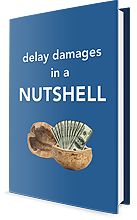What Is The Critical Path?
The key to resolving delay-related disputes on construction projects is to properly identify the cause of the project delay. Because only delays to the project’s critical path will extend the project’s duration, or delay the project’s completion date, it is essential that construction professionals and construction attorneys be able to define and identify the project’s “critical path.”
The critical path method (CPM) is the standard scheduling method for managing construction projects, and the “critical path” is the defining feature of the CPM scheduling method. One would think that in the past 60 years that CPM scheduling has been used, there would be one, widely-accepted definition for “critical path.” Unfortunately, you’d be wrong. Simply, the critical path is the work path, or sequence of work activities, that forecasts when your “project” will finish. (As an aside, a critical path exists even if the project didn’t use a CPM schedule. Projects have a critical path whether scheduled with a bar chart, a CPM, or no schedule at all.)
The Oracle Primavera P6 Professional Help website defines the critical path as follows: The critical path is a series of activities that determines a project’s completion time. The duration of the activities on the critical path controls the duration of the entire project; a delay to any of these activities will delay the finish date of the entire project…
The essential characteristics of this definition of the critical path are that it is a “. . . series of activities that determines a project’s completion. . .” and that the “. . . duration of the activities on the critical path controls the duration of the entire project.” This is the critical path’s unique and defining feature—the critical path is the path of work that determines when a project can be completed. The critical path is defined by this attribute.
The P6 definition goes on to say that critical activities and the critical path can be “defined by either total float or the longest path in the project network.” A word of caution here. In some CPM schedules, the critical path can only be defined as the longest path. An explanation of why this is the case will be the subject of a future blog posting….stay tuned.
However, there is wide agreement among construction schedulers and associated industry organizations to define the critical path as the longest path in the schedule network. Therefore, the preferred definition of the critical path is “the longest path of work in the schedule network that forecasts when the project will finish.”
For more on this or any other topic, please call me at 215-814-6400 or email me at mark.nagata@traunerconsulting.com.

